I talk with a ton of women looking for quick fixes and drastic changes to their diet to lose weight fast. Although we all know someone who lost a few dress sizes by doing intermittent fasting or someone who thinks more clearly thanks to keto, I’m here to tell you those ways of eating aren’t for everyone. In fact, what worked for someone else could push you into early menopause or land you in the hospital! Although it doesn’t share the appeal of a sexy, flashy fad diet, learning what your plate should look like each meal is really and truly your ticket to weight loss and control.
Say Goodbye to Dieting
Let me say it again, styling your plate each meal like I’m about to explain will help you get to the weight you want and keep it off, freeing you from yo-yo dieting forever. And if you’re looking to put on muscle, it’ll help you with that, too. It’s honestly the best tool I’ve found for individualized fat loss- and maintaining your results.
The best news? It’s not as hard as you might think and no food is off limits!
And, bonus! You are rewarded at the end of this post with a meal plan!
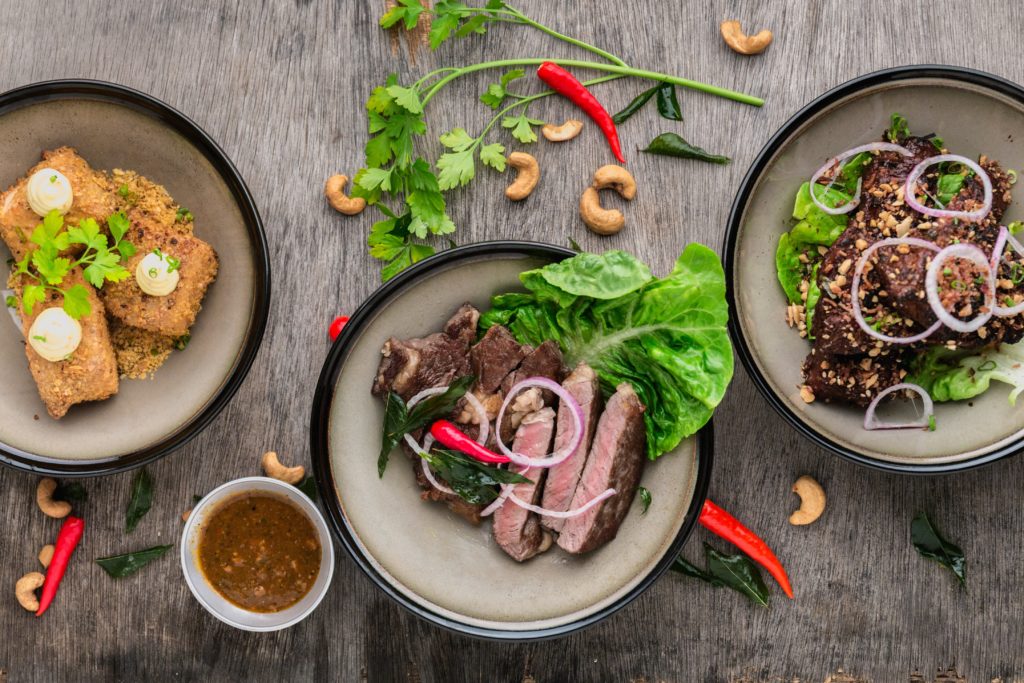
Learning how to eat this way will empower you to take your health into your own hands. Can you imagine knowing exactly what to tweak to lose those last 5 pounds before vacation? Or how to reach your 100 pound weight loss goal without having to forego all your favorite foods? By learning how you plate should look at each meal you’ll shed weight, feel energetic, and your digestion and metabolism should improve!
OK, one last thing before I spill the beans:
I used to think I knew how to eat right until I became a nutrition coach. My “healthy” foods were hurting my hormones, and how I designed each meal was causing me to gain weight- not lose. Reaching for “healthy” foods without a plan can still be a huge dietary upgrade. However, there’s a better, more efficient way. Since I know you love efficiency, let’s do this!
Make Your Plate Look Like This to Lose Fat
Modeling your plate after the tried-and-true hand portion guide is your best bet. If you’ve heard this before, hear me out. And while we’re at it, here’s a before and after photo of me – I wasn’t dieting and was working out to the same degree in each photo. All that changed was how I designed my meals and my plate. Most people would have said I didn’t have weight to lose, but apparently I was saving up for winter in my cheeks.


Portion control, friends. That’s it.
Look to Your Hand to Learn How to Eat Right
This method shows you an uncomplicated way to always know how much to eat and what to eat for your goal weight! Here’s how to use your hands to guide your portions.
Your Palms: Protein
Each meal should include 1-2 palm-sized portions of protein.
If you’re working out, especially strength training, or a dude, shoot for 2 palm-sized portions per meal.
Protein can fill you up, so don’t force down your meal if you’re stuffed. This is a guide, not the law!
Protein Sources
Lean meats
- chicken
- turkey
- beef
- bison
- venison
- organ meats
Not so lean meats
- certain roasts
- cuts of pork, etc
- Bacon is not a good protein source on its own, but can increase protein content when paired with a lean protein source
Fish
Preferably not fried. Limit to 2-3 servings per week for adults and children 10 and older due to mercury levels. Pregnant women and small children should consume less. A serving size is one palm-sized portion.
- salmon
- tuna
- shrimp
- cod
- You can see more “safe” choices here.
Dairy
Lean dairy like cottage cheese, greek yogurt, kefir, milk, etc.
Eggs aren’t technically dairy but I’m going to include them here anyway! Don’t be afraid of the fat in eggs, they are a great source of protein.
Plant-based Protein Sources
- Quinoa
- Buckwheat
- Lentils
- Hempseed
- Chia seeds
- Rice and beans
- Seitan
- Spirulina
- Nuts and nut butters
- Peas
- Bean varieties
- Broccoli
- Soy (limit to 1-2 servings per day)
and Protein Powders
My fave is Orgain, which won the Clean Food Awards last year! It has a vegan option and a whey option. Check them out here:
Keep going, your meal plan is awaiting you!
Your Fists: Veggies
This one is intuitive because you’re fist-pumping about your excitement for veggies regularly.
Ball your hands up into fists. Shoot for 1-2 portions of veggies this size at each meal.
Woah, each meal?!
Yeah, it can seem overwhelming at first. I tell my clients to look at how many veggies they are currently eating and at which meals. Find wherever it’s best to add another serving and start there. You don’t want to go from zero-10 servings of veggies overnight because you could be in “digestive distress” as our friend Sheldon Cooper would say. Start slowly with this one, but be diligent!
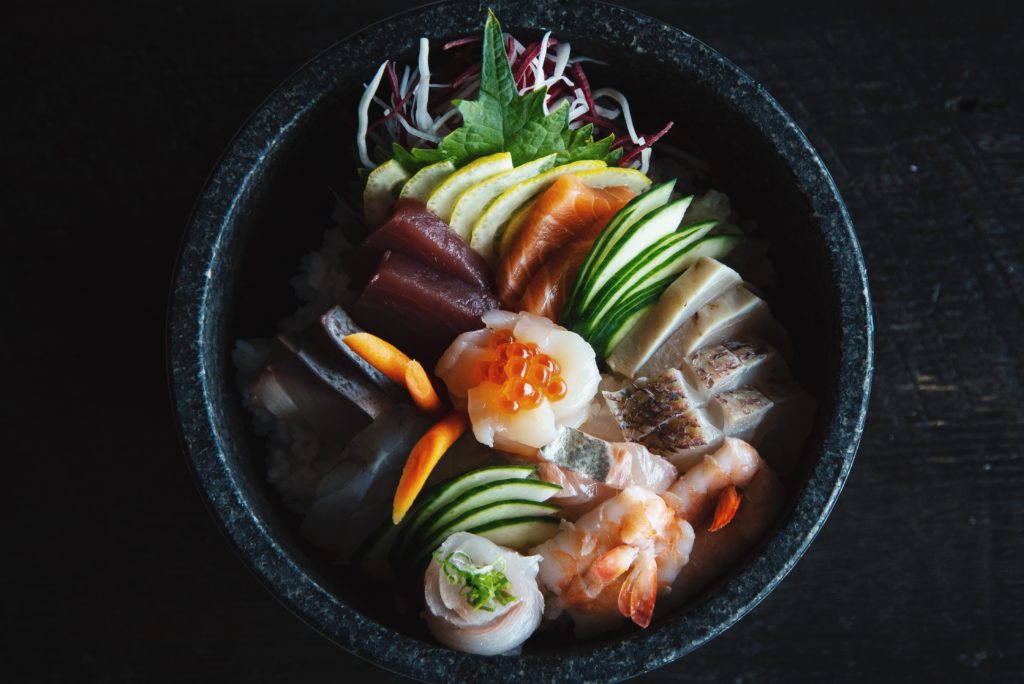
Veggie Sources
I hope you already know some veggie sources! Find non-fried veggies that you like to eat. Go easy on the potatoes. Write out your favorite veggies and make your own list to start with. Here are some of my go-to’s:
- broccoli
- peppers
- onions
- mushrooms
- celery
- carrots
- zucchini
- corn
- kale
- brussels sprouts
- all squashes!
Find some that work for you and start adding them to your meals, one at a time if needed.
Your Hand(s), Cupped: Carbs
We all looooove us some carbs, but this is where the hand portions guide gets real.
Most women and people trying to lose weight should limit their portion to 1 cupped handful of carbs. Cup your hand as you’re spooning that rice onto your plate and try to estimate how much would fit into your hand. That’s how much rice you get. If you’re an endomorph or have trouble losing fat, limiting your carbs to 1 cupped handful is key, and perhaps consider even skipping them at dinner. No, carbs are not the enemy. But being strategic and controlled with them will take you a long way!
Who gets the second cupped handful? Men who aren’t trying to lose a lot of fat, both men and women trying to put on muscle, and people who workout in excess of 2 hours per day. If your body type is ectomorphic, you can most likely get that extra cupped handful without hurting your goals, you lucky dog, you.
Carb Sources
In regards to “healthy eating” and weight loss, most carbs should come from unprocessed sources, mainly veggies and fruits. Processing tends to strip nutrients and add chemicals and sugar.
Vegetables can sometime overlap as carb sources, but are also good sources of fiber. If your go-to veggies are on this list and weight loss is your top goal, I would consider counting them as your carb and add other veggies to your plate!
Starchy Sources
- Quinoa
- Corn
- Amaranth
- Oats
- Bread
- Pasta
- Rice
- Potatoes (not deep fried!) yams, sweet potatoes, pumpkin
- Oats
- Cereal grains: wheat, rye, ancient grains
- Some squashes have moderate carb counts
and Refined Sugary Carb Sources (mmm)
Sugary and refined foods can also count as your carb source: desserts, juices, processed foods, soda, sports drinks, commercial nutrition bars, dates, figs, raisins, dried fruits, etc!
If you’re dying to have that cake, eat it as your carb source on your plate, or skimp on your carbs at another meal to make room for it.
I know, talking about earning or making room for dessert can turn real disordered, real fast. That’s not my intention and deserves its own separate discussion.
All I’m saying is that to keep moving full steam ahead towards your goals, you don’t have to always turn down the cookies at the party. Make them work on your “plate” even if you’re not eating them for dinner. Personally, I try to workout close to the time I will be consuming a little extra carbs or sugar because I know that’s when my body can best handle them!
Your Thumbs: Fat
You need fat. You don’t need Keto or Atkins, or an ultra-low fat diet to be healthy and reach your goals. All you need is about 1-2 thumb-sized portions at each meal. If you eat a meal really high in fat, you can make up for it in another meal.
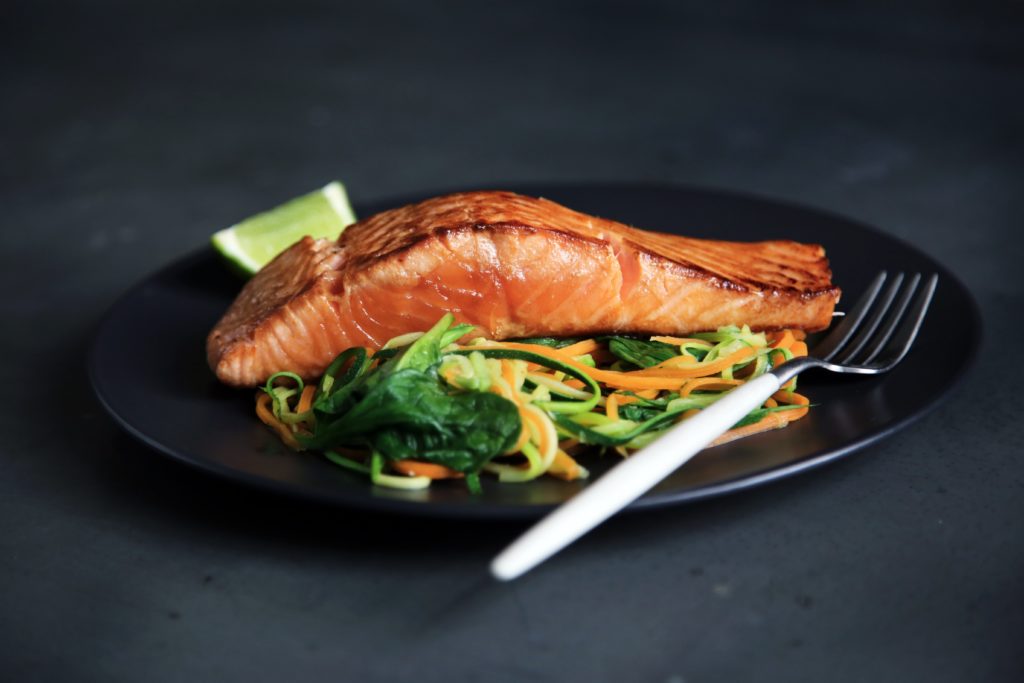
You also need to get your fat from healthy sources. In the American diet, it’s usually pretty easy to get saturated fat from meat, butter, eggs, and processed foods. We often need to be mindful of adding in healthy types of fat, like monounsaturated fats and Omega-3’s.
Fat Sources
There are a ton of different types of fat and sources of fat. I’m going to list the ones American’s don’t usually get enough of, so you can focus on adding these into your diet.
Monounsaturated
- olive oil
- avocado
- pecans
- almonds (and almond butter)
- macadamias
- cashews (and cashew butter)
- pistachios
- tahini
- pumpkin seeds
- olives
Omega-3 sources:
- fish and algae (DHA, the most helpful Omega-3 is usually only found in seafood)
- flax, chia, and pumpkin seeds
- walnuts
- enriched organic/cage-free eggs
- grass fed dairy and beef
- brussel sprouts
- spinach
- edamame
- beans (mainly black, pinto, and kidney)
- wild rice (not brown or white)
Although neither of these lists are complete, they’ll give you plenty to choose from.
We don’t have time today to discuss all that goes into fat balance, but I’m here to tell you it’s very important for heart health. I have a nutrition course that will teach you all of this in greater detail + help you turn this information into actionable tasks and habits!
If you find any of this overwhelming or worry about your ability to stick with it, I’d love to coach you through it and help you personalize the habits for you! Check out my options for coaching or send me a message.
Almost to that meal plan, friend.
Other Crucial Habits for Fat Loss
Let’s wrap this up so you can get started, right?! There’s a few more tips that you’ll need to know.
Eat slowly and stop before you’re full.
This improves digestion and will help you consume less overall calories. Go ahead and taste your food. I’ll wait.
Snack well and snack often.
For most people, the protein and veggies habits are the hardest to get in, and they often struggle limiting their fatty and carby foods. I’d recommend most reach for snacks high in protein, like a protein shake/bar, string cheese, Greek yogurt, cottage cheese, mixed nuts, etc. Or a veggie-based snack, like veggies and salsa or guacamole. Your plate probably won’t be perfect every time, and you can add whatever you’ve been missing to your snacks!
Eat enough so you’re hungry again in about 3 hours.
I know this isn’t always possible with your job or life. But if you can, stop eating before you’re full and eat just enough that in about 3 hours or so, your tummy starts to rumble. Then, have one of those healthy snacks we just talked about, or your next meal. This takes practice. If you’ve been stuffed for 5 hours past lunch, your portions were too big. If you were hungry after 1 hour, they were probably too small.
(Meal) Plan for Success
I love this way of eating because I can apply it to a spread at a party, a buffet, a restaurant menu, and planning out my own meals.
Speaking of planning, it will be helpful for you to plan out some meals and snacks ahead of time to boost your success rate.
And because I know this way of eating is better than a diet and can change your life- but still takes effort and time – I’ve created a FREE downloadable meal plan for you to keep! It’s such a great way to kickstart your healthy eating habits and consume REAL FOOD! All you have to do is enter your email below and the meal plan will be sent to you shortly. It’s called “Real Food Reset.” Enjoy!
*These meal plans are designed to be healthy and easy, but not treat any particular condition. Talk with your doctor about special diets for your medical condition!
Share this post with your friend who would benefit from it, or ya know, all your Facebook buds. :)
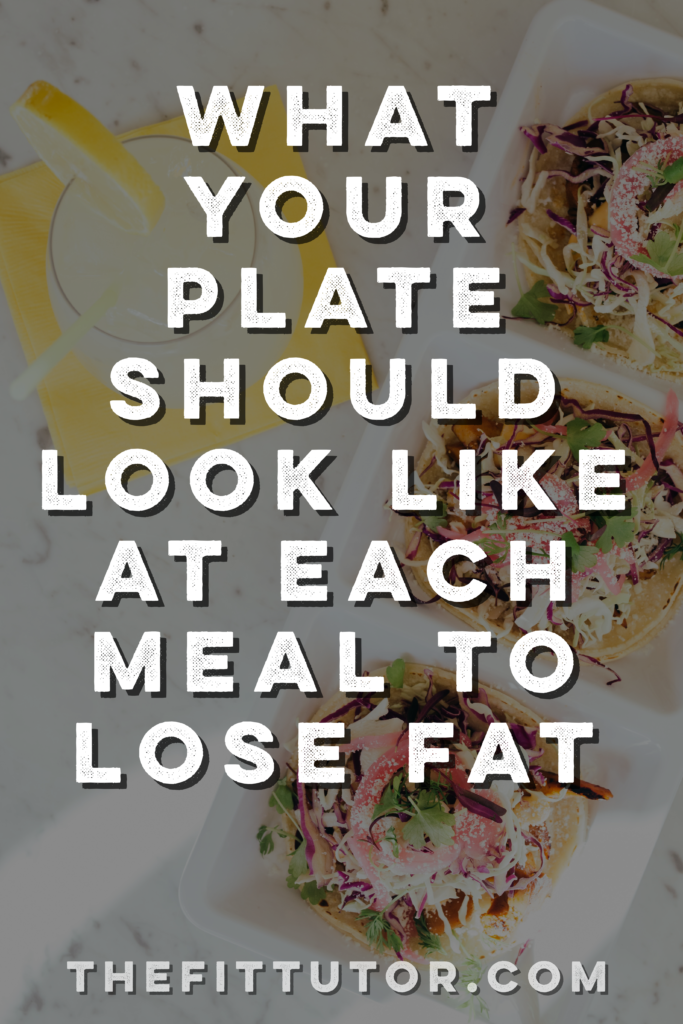
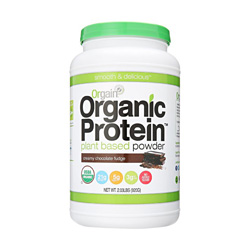

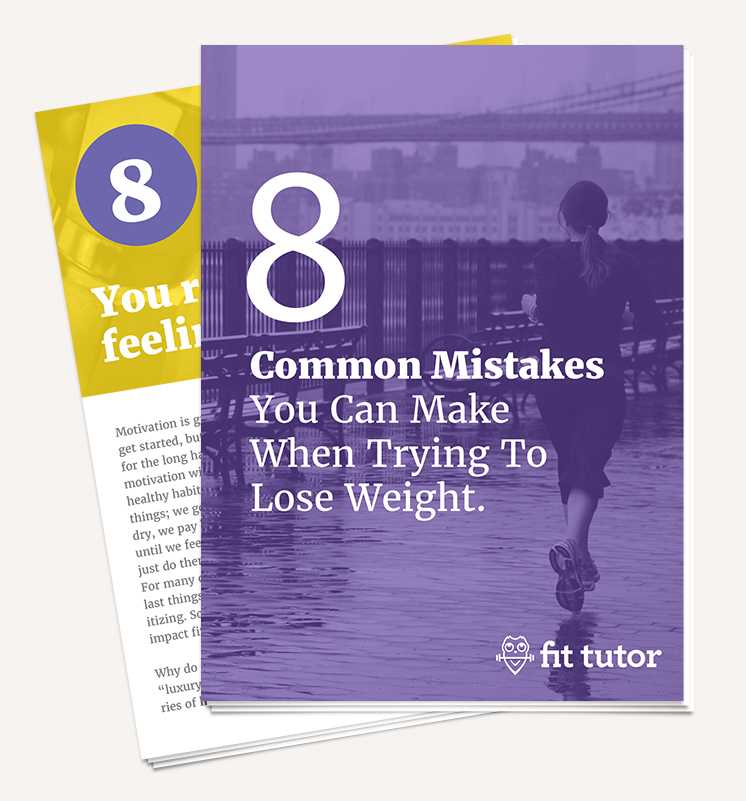
Where’s the fruit?